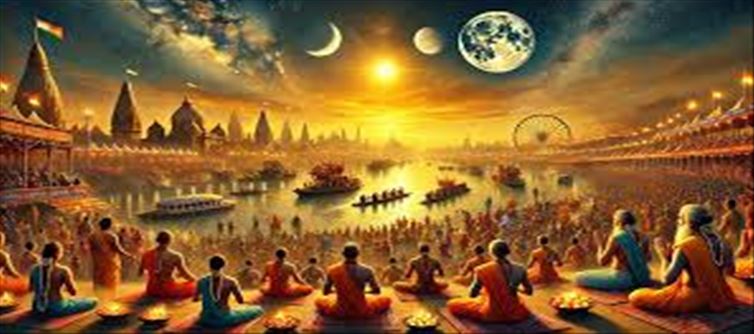
The naga Sadhus and Aghori Sadhus are both ascetic groups that follow Lord shiva, but their practices, lifestyles, and rituals differ significantly. Here’s a breakdown of the main differences between them:
1. Worship Practices:
Naga Sadhus: They are followers of the Shaivite tradition and primarily worship Lord Shiva. Their rituals include offering belpatra (leaves), ash, and water to the Shivling. fire and ash are central to their worship. Their focus is on meditation, yoga, and deep devotion to attain spiritual goals.
Aghori Sadhus: They follow a more intense and unconventional form of worship. Aghoris engage in three types of sadhana: shiva Sadhana (devotional practices), Shav Sadhana (where they offer meat and alcohol), and Shamshan Sadhana (rituals performed in cremation grounds). They believe that Lord Dattatreya is their guru, and they view shiva as the path to salvation.
2. lifestyle and Practices:
Naga Sadhus: They lead a life of celibacy and renunciation. naga Sadhus remain naked as a symbol of their detachment from worldly desires. Their initiation process lasts 12 years, with the first six years focusing on the learning of celibacy, rituals, and penance. They also practice austerity, such as eating only once a day and asking for alms from just seven houses.
Aghori Sadhus: Aghoris also revere shiva but have more extreme practices, such as worshipping Maa kali and following the Kapalika tradition. They often consume meat and alcohol as part of their sadhana, and they may apply ash to their bodies and carry human skulls as symbols of their beliefs. They typically live in solitude, usually in crematoriums, and are seen publicly mainly during large religious events like the maha Kumbh.
3. Diet:
Naga Sadhus: They eat only once a day, and their food is obtained through alms. They strictly ask for food from only seven houses per day; if they are unable to collect food, they remain hungry.
Aghori Sadhus: Aghoris consume meat, often as part of their ritual practices. Their diet is more varied, and they are not as strict about alms as naga Sadhus.
4. Role and Philosophy:
Naga Sadhus: naga Sadhus are seen as protectors of humankind and religion. They are responsible for safeguarding the spiritual realm and maintaining the integrity of ascetic practices. Their commitment to renunciation and celibacy symbolizes their detachment from worldly life.
Aghori Sadhus: Aghoris have a more liberating philosophy, embracing all aspects of life, including those that are typically considered taboo, such as death, decay, and taboo foods. They believe that by transcending societal norms, they can achieve spiritual liberation.
In conclusion, while both groups are deeply devoted to Lord shiva, naga Sadhus focus on meditation, celibacy, and renunciation, whereas Aghori Sadhus embrace extreme rituals and transgressive practices as a means of spiritual enlightenment. Their lifestyles and philosophical approaches reflect their unique paths to salvation.




 click and follow Indiaherald WhatsApp channel
click and follow Indiaherald WhatsApp channel